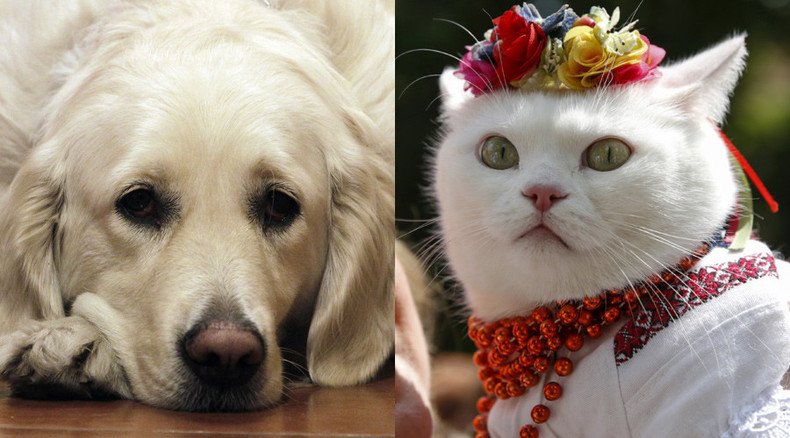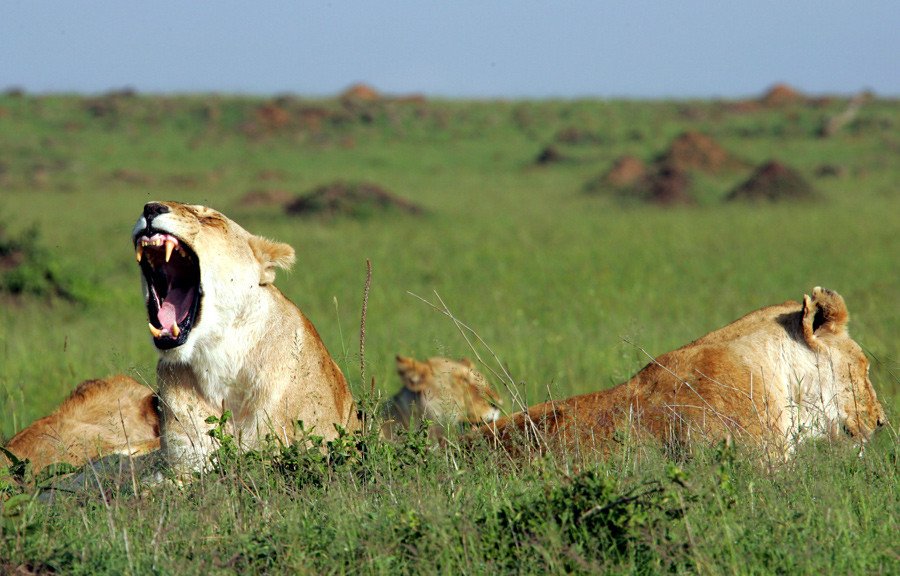Cat-astrophic dogfight: Felines nearly wiped out all dogs in ancient times, scientists say

There is a widely-held notion that dogs hate cats. It turns out this could have some scientific merit. Some 40 species of canines that originated in North America became extinct thanks to the ancestors of cats, scientists say.
The groundbreaking study threatens to have cat and dog lovers at each other’s throats – but facts are facts: the kind and easygoing nature of canines just isn’t as conducive to survival as that of felines, which already have a much bigger ‘hater’ camp, thanks to their spiteful, self-serving demeanor.
So should the phrase be changed to ‘It’s a cat-eat-cat world’? Probably not. But if the scientists from the Universities of Gothenburg, Sao Paolo and Lausanne are correct, cats beat dogs with a score of 40-0 in terms of species wiped out.
Dogs really do love us: Study finds first evidence of inter-species hormone exchange http://t.co/NrxljnpV9ipic.twitter.com/ZZ1ZTuu4Cu
— RT (@RT_com) April 18, 2015Some 40 million years ago, dogs (canids) came on to the scene in North America. They included foxes, wolves and everything in-between. They reached their maximum degree of variation by about 20 million years ago.
It was around that time that the cat menace came and set in motion a process that led to the sorry state of canids today, of which only nine native species are in existence in North America. The researchers analyzed over 2,000 fossils and found that when the ancient cats (felids) arrived from Asia, it had a deadly impact.
Nowadays, for everything related to the evolution of the species we usually look to climate change. But “instead, competition among different carnivore species proved to be even more important for canids,” Daniele Silvestro at Gothenburg, who led the study, says.

Unlike modern species extinction dynamics, which often have larger predators disappearing faster than smaller ones, the reverse was true for cats and dogs of yesteryear, the researchers believe.
Both the size and natural prowess of the cats are seen as massive contributors to their supremacy over man’s soon-to-be best friend.
“The cats have retractable claws which they only pull out when they catch their prey. This means they don’t wear them out and they can keep them sharp. But the dogs can’t do this, so they are at a disadvantage to the cats in an ambush situation,” Silvestro elaborates.
Sniff it! NHS approves research on prostate cancer-detecting dogs http://t.co/YV8LEii3M4pic.twitter.com/Q7cniaGDYl
— RT (@RT_com) August 8, 2015The research has been published in the journal Proceedings of the National Academy of Sciences (PNAS).
This was among the features that appear to have had a direct consequence on a species’ ability to obtain food. When supplies are insufficient for all, only the most adept survive. This can be seen in modern-day Africa, where hyenas, lions, dogs and other carnivores battle fiercely for meat in the vast flatlands.












